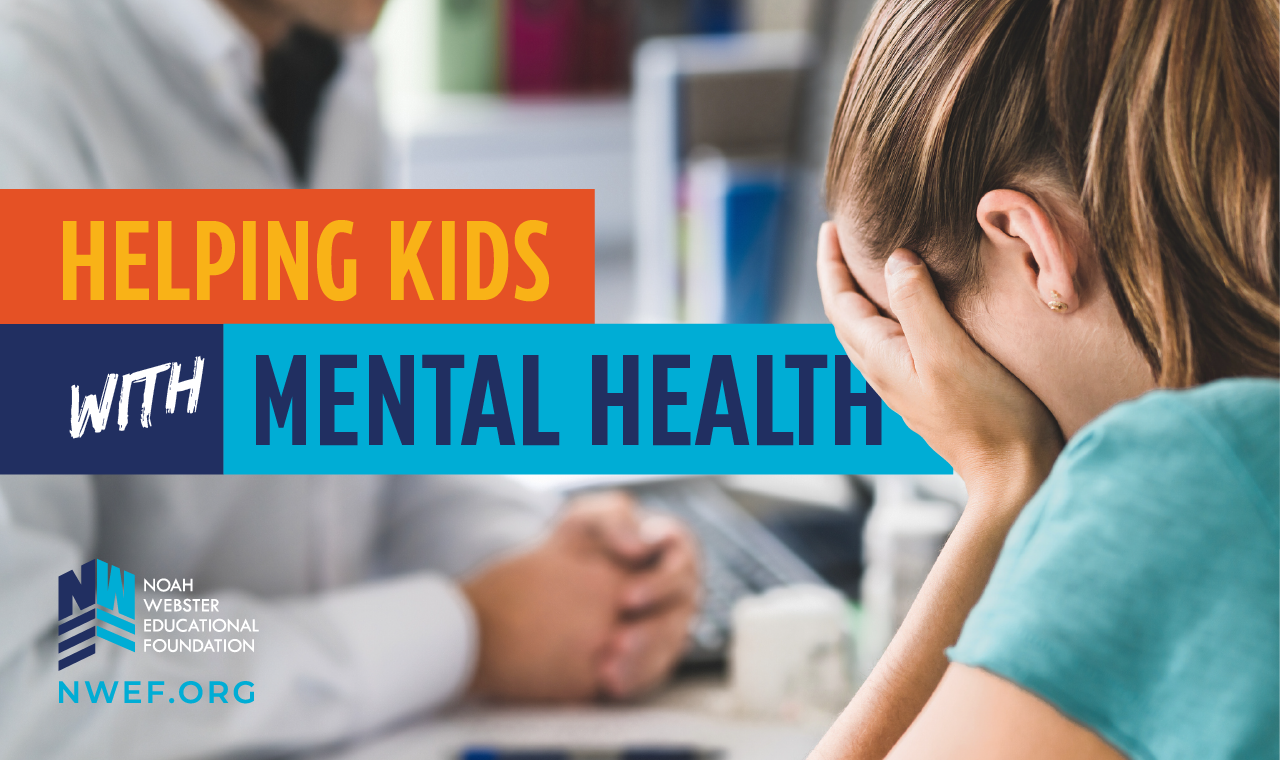
Helping kids with mental health: tips and resources
Resources That Might Help
Communication is hard. Your best resource is a motivation to build the trust needed to communicate well with children. That might mean wading through hurt and conflict.
But you can also use activities to your advantage.
If you’re a parent, an activity might look like setting aside a time every week to get lunch or ice cream with your child. If you’re a teacher, that might be mentoring them as they write an essay or complete an art assignment. Create time for discussion, even if it seems uncomfortable at first.
Reading aloud is an awesome activity that not only gets you both into one room sharing a good story, but reading is also critical to mental health. So even when she becomes a teen, that love for reading may take root and give her a resource to draw from that relaxes her and puts her into someone else’s shoes for an hour.
Books can also be a catalyst for discussion. Sharing a read story can lead to sharing our own real life stories.
There are many books for children about mental health, such as My Monster and Me by Nadiya Hussain (for little ones) and the award-winning Fighting Words by Kimberly Brubaker Bradley (for older children). We recommend vetting mental health books before letting your children or students read them, and choosing stories that don’t preach but tell a good story that children will empathize with.
Give Them Structure
Children need a certain amount of structure in their lives.
First, children need structure in their everyday lives. And not just things like getting up in the morning or getting back in class on time after recess, though those are essential to a sense of security, but disciplinary structure and boundaries, too. Whether a child is at school or at home, he must adhere to his parents or teachers wishes when it comes to his behavior. He needs to know that bad behavior has consequences, while good is praised and rewarded.
Every family will have slightly different rules and expectations as will every classroom. These boundaries make sure that everyone is living in harmony and accomplishing their tasks.
Children and teens need to be held accountable for their behavior, how they’re using technology, and who they’re hanging out with, to mention just a few examples. For instance, bullying is never all right. Staying on their tablet far into the night or looking at porn is unacceptable. Mom and Dad need to know who your friends are.
Resources That Might Help
For parents and teachers, researching or reading books on how to structure your days and help kids thrive in a healthy, happy, safe environment is a good place to start.
When it comes to accountability, make sure you’re present and involved in your children or student’s activities, as his media consumption and the people he is around can negatively or positively affect his mental health. Maybe that means watching movies as a family instead of letting your children view content alone in their room. As a teacher, you might realize you need to set down clear rules about name-calling.
If you’re a parent, accountability apps can be a huge help. To keep your kids safe on the internet, you might consider using an app that sends reports of internet activity to your email, like Accountable2You or Bark. Or an app that tracks your child’s phone, such as Life360.
To be even more certain you kids can’t find inappropriate content on the internet, some apps can lock internet browsers from displaying inappropriately violent or sexual images. Many of these apps are free, making it easier than ever to protect your kids.
Model Good Mental Attributes
Strive to create a healthy atmosphere in your classroom or home where you are the role model. Praise your child or student. Praise his character rather than simply his physical appearance or accomplishments. Show him what it means to truly love and appreciate someone.
Model forgiveness. Be more joyful. Point out others’ good character traits (both in real life and fiction). Be an example of positivity instead of negativity.
Help them think in a healthy way about sexuality. Teens are especially vulnerable to the LGBTQ movement. In fact, 42% of LGB youth “seriously considered attempting suicide in the past year, including more than half of transgender and nonbinary youth,” Youth.gov says. Kids need parents and educators who stand up for traditional values and model good marriages and healthy thoughts on gender and sexuality.
Healthy children should have healthy eating habits, so, if you’re a parent, consider your example to your children in this area. Do you model good diet habits? Do you encourage them to drink lots of water?
Exercise is also crucial to mental health and an excellent way to burn off toxins that negatively affect the brain. Plus it gets your child or student’s nose out of his device for a while.
And don’t forget, parents: set a healthy sleep routine for your entire family. Rest is a critical element for a healthy mind.
Resources That Might Help
There are plenty of great videos on YouTube with workouts (like this one by Fitbit), stretching exercises, and guided meditation. Or, for fun, get your kids moving with a dance exercise video, such as this one inspired by Disney’s Encanto.
There are also a ton of great mental health apps that you might consider trying, such as a sleep or exercise app.
Focus on the Family has some good resources on teaching children about marriage. iMom has a fantastic article on how you and your spouse can shape our kids understanding of marriage.
Look For Signs Of Bullying
“Nearly one-quarter of tenth graders who reported being bullied also reported having made a suicide attempt in the past 12 months, according to a Washington State Healthy Youth Survey,” says Very Well Family.
Bullying has, at best, a negative effect on children’s self-image. But not only are children more likely to commit suicide, they are at a higher risk for eating disorders, depression, loneliness, and sometimes increased violence.
And don’t forget cyberbullying, which is becoming more and more of a threat as children have greater access to technology. In fact, Very Well Family says that “cyberbullying caused kids to consider suicide more than traditional bullying according to a study in JAMA Pediatrics.”
Resources That Might Help
The CyberSmile Foundation has a list of helplines to call if cyberbullying is taking place. You may want to give your child or student one of these numbers to have on hand.
You can visit the US government’s anti-bullying website and find out how you or your child/student can get help if bullying is going on.
Crisis Text Line also has a lot of information about what bullying is and a phone number you or your child can text to get help.
Get Help
Sometimes it’s necessary to get outside help, especially when your child or student becomes suicidal or shows signs of thinking about suicide.
If you have more immediate concerns, don’t hesitate to call up a friend or family member who has had experience, talk to your school’s counselor or principal, or call a hotline. You could save a life. Talking to someone else can give you the courage to take the next step in preventing a suicide. And if you don’t know which way to turn, the person you call can help you come to a decision on what to do.
If you’re a parent, it might be time to get professional counseling, both for yourself and your child. Or in the most serious situations, you might consider therapy or taking your child to a doctor.
Resources That Might Help
There are dozens of resources out there for suicide prevention.
First, don’t forget that you can easily call 911 to get immediate help. Another great hotline is the 988 Suicide & Crisis Lifeline where you or your child can get free support and counsel. They even have crises centers around the country.
You can also find information and resources on websites such as the American Foundation For Suicide Prevention.
Supporting Kids In An Age Of Instability
Kids need adults in their lives who love them. Life is daunting, worrying, and confusing. Suicide and mental health disorders are rampant in today’s children. And the world isn’t getting any easier to cope with.
Learn more about the concerning trends in mental health among students, here.
And if you’re a teacher, you’ll want to check out our tips on warning signs to look for if you think your student is struggling with mental health.
We, both parents and educators, can come alongside our kids. We can support them with love, care, and resources. They’ll notice our efforts, and that, above everything else, will give them hope.
The COVID-19 pandemic caused the student mental health crisis to skyrocket. Depression, anxiety, gender dysmorphia, self-harm, and suicide have become themes for school-aged kids.
It’s important that these children get the counsel and love they need. First and foremost in a child’s life is his or her parents, and parents have the ultimate responsibility to ensure their child is safe, happy, and loved.
But sometimes a child doesn’t have a stable family life or authority figure they can turn to. Or maybe he hides his mental health struggles when at home. That’s where a teacher can be a huge help in the life of a child.
You have a specific role to play in your child or student’s life, and you don’t want them to be counted as bullied, depressed, or suicidal. But where to start? How can we prevent mental health crises in our kids? Let’s look at a few essential resources and tips you should always have on hand to support the kids in your care.
Keep Communication Open
Strong attachments and good communication are two of the most important things in a child’s life. They are critical for a child or teen to be mentally healthy.
Develop a strong attachment between you and your child or student by communicating well. Parents, your child should be able to come and talk to you about any issue! So be honest with him, show him that you’re willing to discuss things that are happening in your life, or let him know that you’re not perfect either and have struggled too. Pretty soon, he’ll start reciprocating. Make sure you follow up on discussions you have. Ask how she’s doing; if she’s been feeling down, has that worsened since last you talked, or the opposite?




